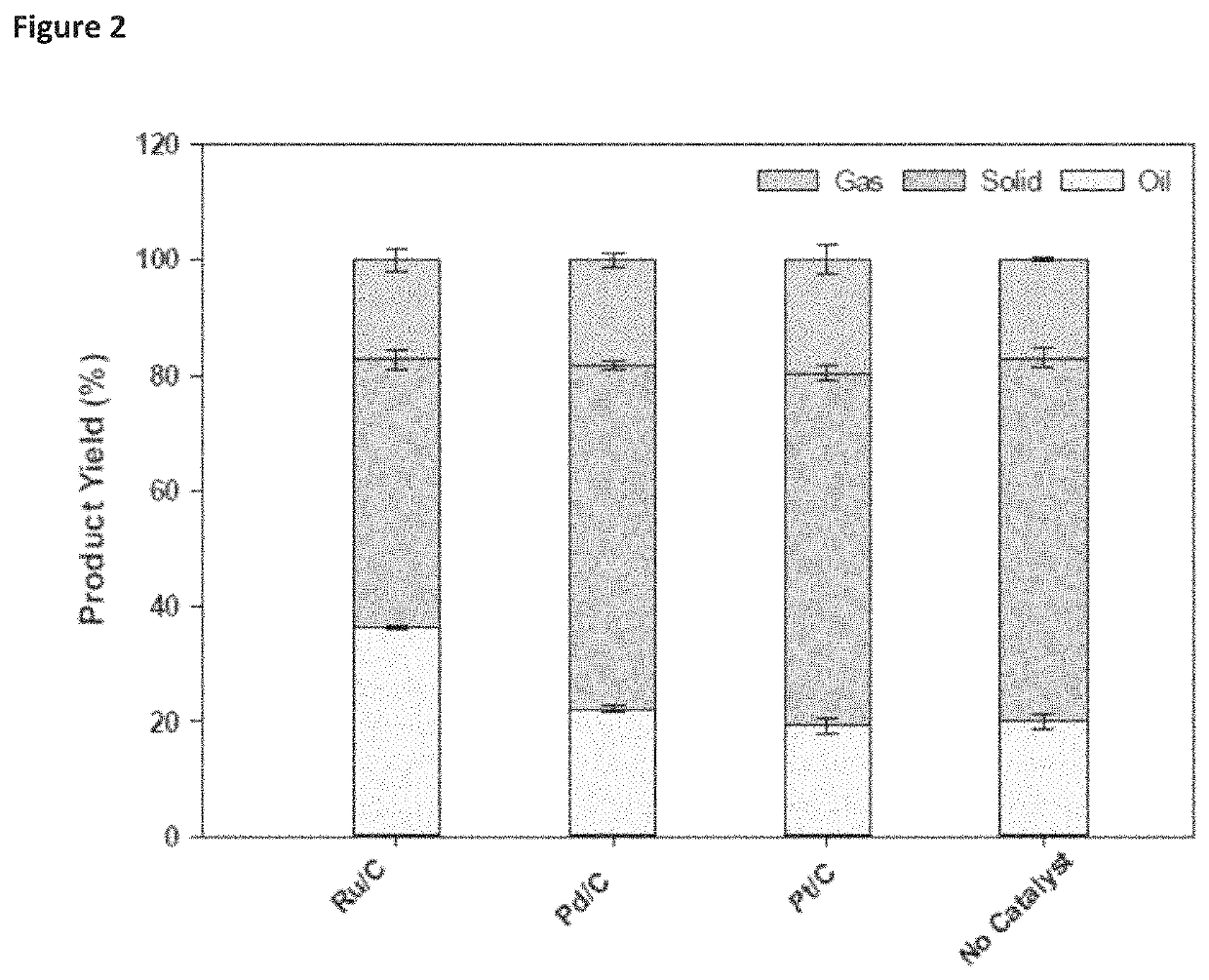Lignin valorization in ionic liquids and deep eutectic solvent via catalysis and biocatalysis
a technology of which is applied in the field of lignin valorization in ionic liquid and deep eutectic solvent via catalysis and biocatalysis, can solve the problems of heterogeneous mixture, inability to retain native structural properties of lignin, and inability to achieve the extraction of lignin
- Summary
- Abstract
- Description
- Claims
- Application Information
AI Technical Summary
Benefits of technology
Problems solved by technology
Method used
Image
Examples
examples
Material and Methods
Materials
[0092]Biomass sorghum (Sorghum bicolor, forage variety ES5200) was provided by the Bioenergy Feedstock Library, Idaho National Laboratory (Idaho Falls, Id.). Air dried sorghum sample was grounded to pass a 2 mm sieve using a model 4 Wiley mill, and stored in Ziploc bags at room temperature for subsequent experiments. Isopropyl alcohol, Ru / C (5 wt % Ru), choline chloride, and lactic acid were purchased from TCI America, whereas acetone, ethanol, Pd / C (5 wt % Pd) and Pt / C (5 wt % Pt) were purchased and used as is from Sigma-Aldrich.
Pretreatment and Lignin Recovery
[0093]DES was prepared by mixing choline chloride and lactic acid in its solid state in a molar ratio of 1:2, followed by heating the mixture with constant stirring at 65° C. for 2 h in an oil bath as described elsewhere. The mixture was stirred until no solids left, leading to a final transparent liquid (DES). The DES was cooled down and kept in a desiccator for further use.
[0094]Pretreatment of ...
PUM
| Property | Measurement | Unit |
|---|---|---|
| pressure | aaaaa | aaaaa |
| temperature | aaaaa | aaaaa |
| number-average molecular weight | aaaaa | aaaaa |
Abstract
Description
Claims
Application Information
 Login to View More
Login to View More - R&D
- Intellectual Property
- Life Sciences
- Materials
- Tech Scout
- Unparalleled Data Quality
- Higher Quality Content
- 60% Fewer Hallucinations
Browse by: Latest US Patents, China's latest patents, Technical Efficacy Thesaurus, Application Domain, Technology Topic, Popular Technical Reports.
© 2025 PatSnap. All rights reserved.Legal|Privacy policy|Modern Slavery Act Transparency Statement|Sitemap|About US| Contact US: help@patsnap.com



